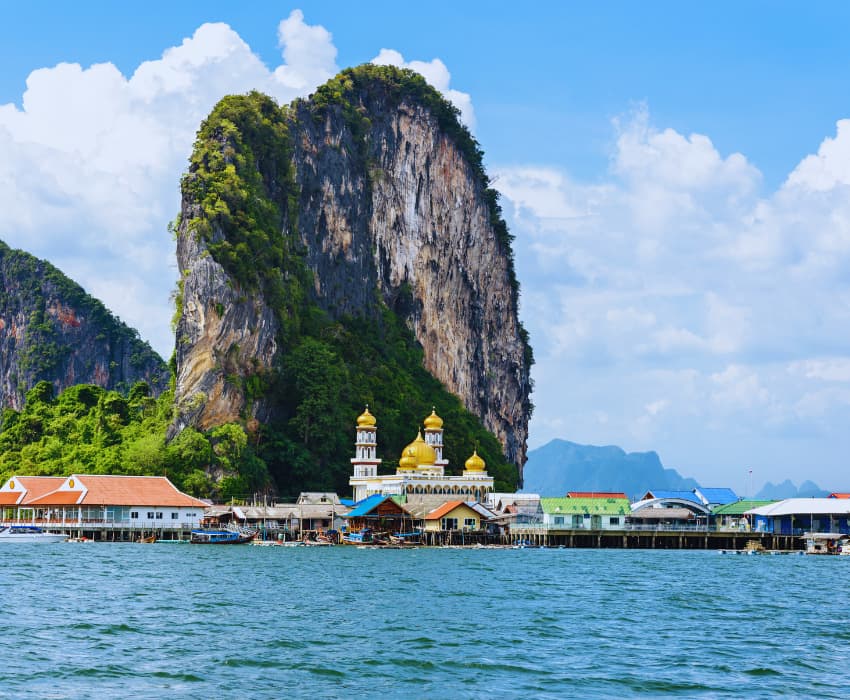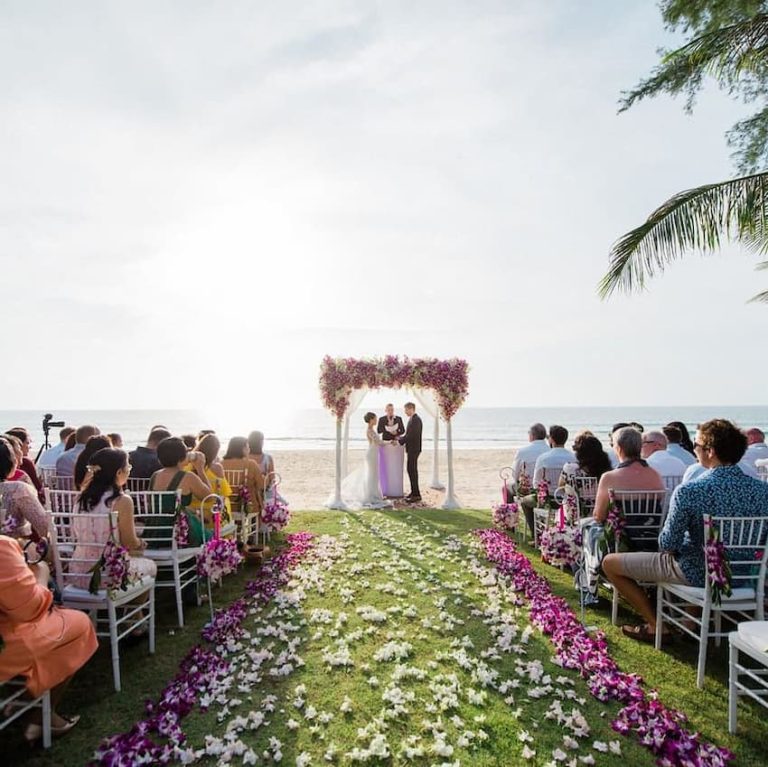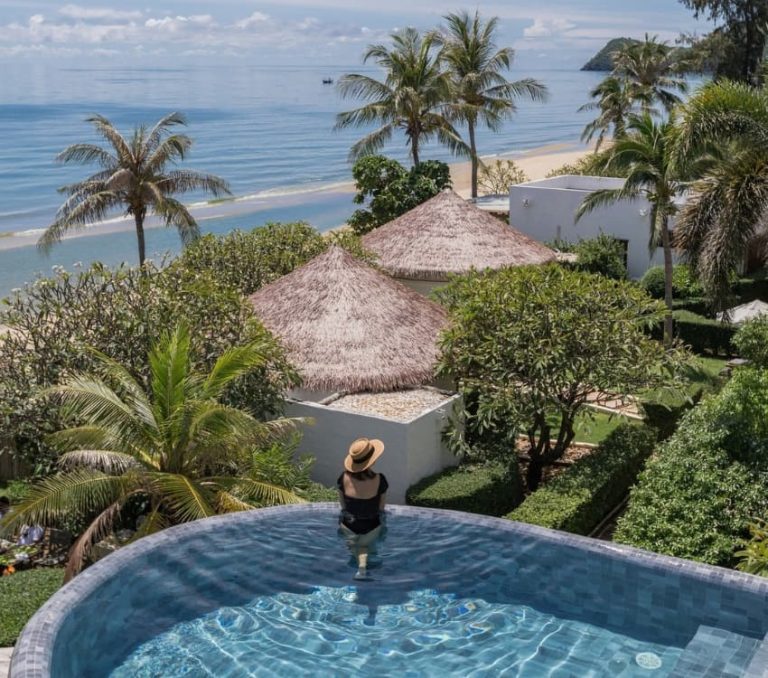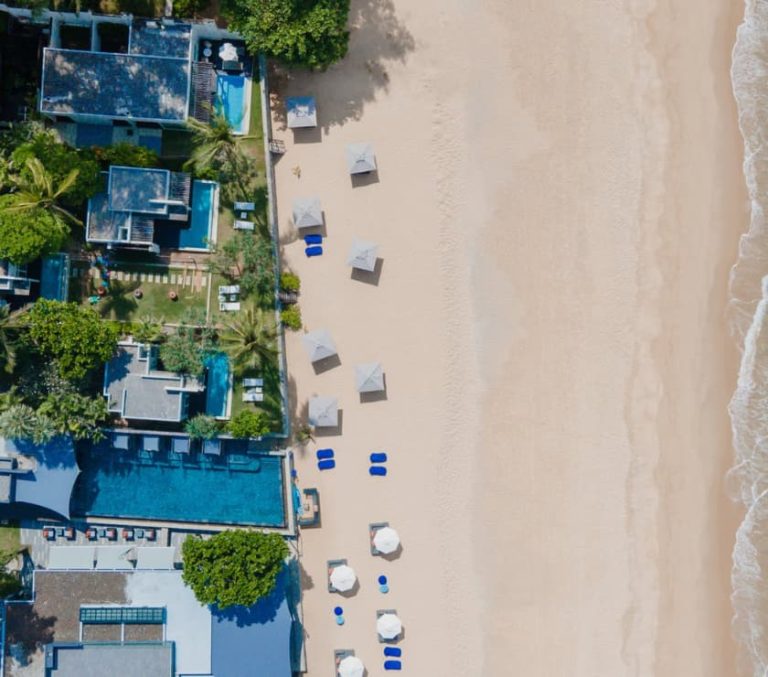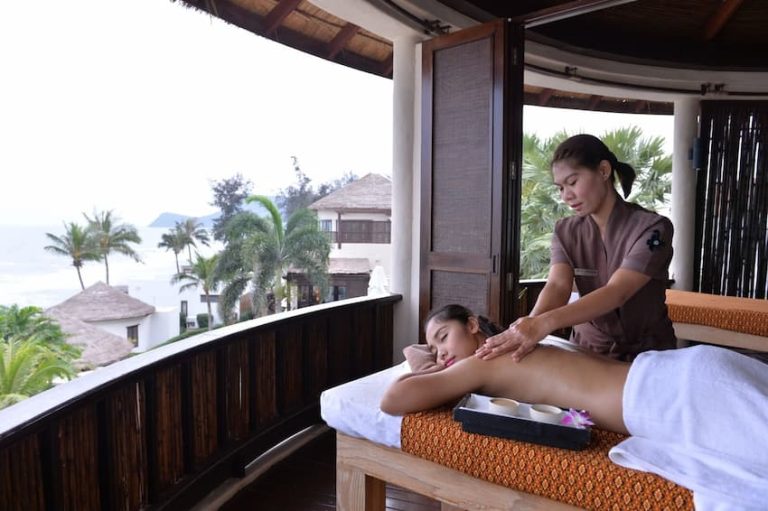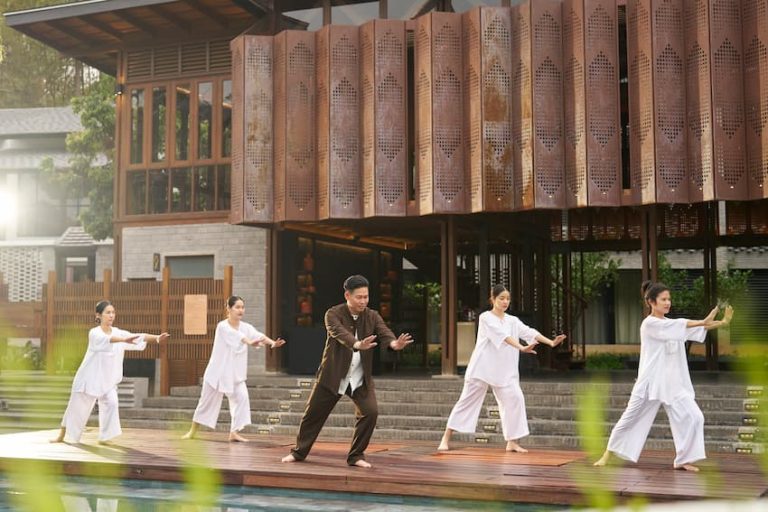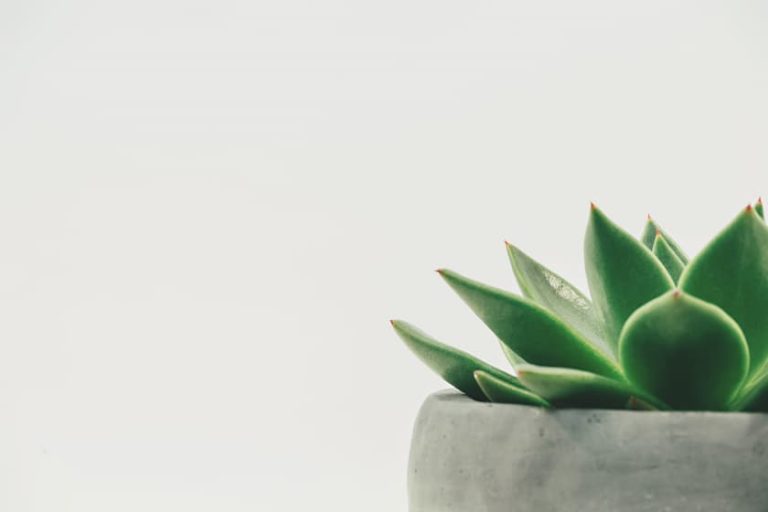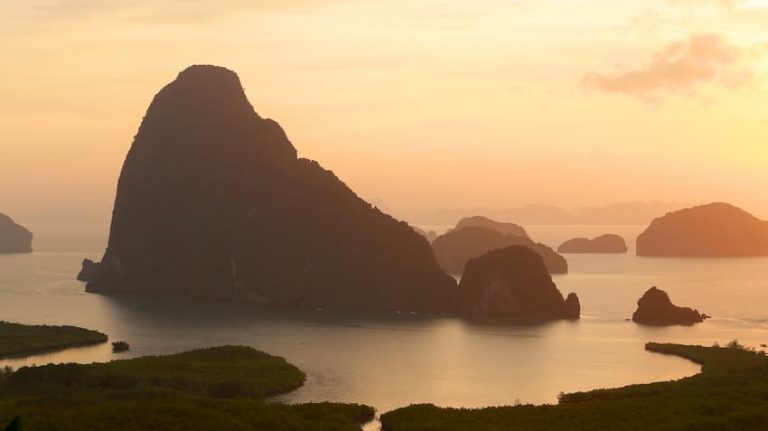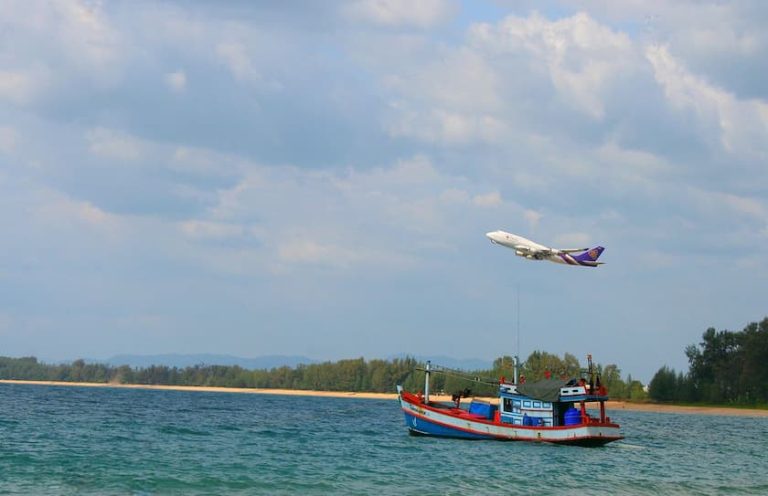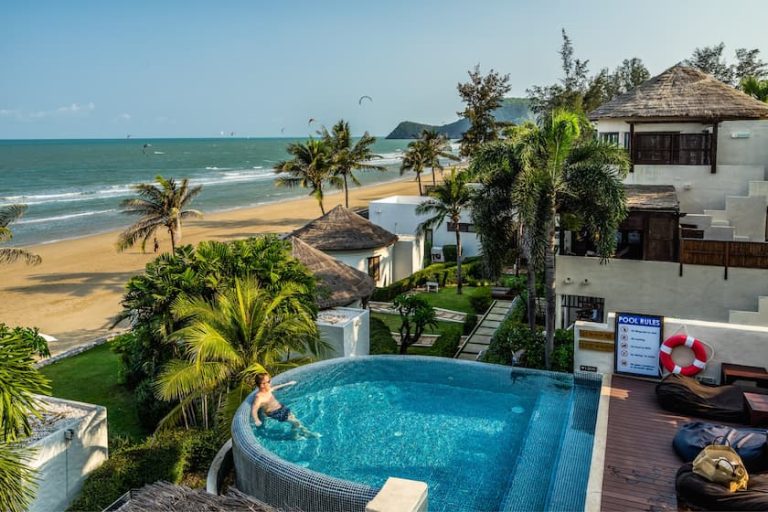Koh Panyee, or Koh Panyi, is a fascinating island destination in the heart of Phang Nga Bay, Thailand. Known for its unique characteristics as a floating village, Koh Panyee is a remarkable example of human ingenuity and adaptation. The island is situated against towering limestone cliffs, creating a picturesque setting that captivates visitors worldwide.
Nestled within the serene waters of Phang Nga Bay, Koh Panyee stands out due to its distinct lifestyle and community structure. The village is entirely built on stilts over the water, providing a rare and intriguing glimpse into a way of life that has persisted for over two centuries. This architectural marvel allows the community to thrive in harmony with their marine environment, relying heavily on fishing as their primary source of livelihood.
The floating village is an impressive feat of engineering and a vibrant community rich in culture and tradition. With houses, shops, a mosque, and even a floating football pitch, Koh Panyee offers a unique blend of daily life and tourism. This island village is a testament to the resilience and resourcefulness of its inhabitants, making it a must-visit destination for anyone exploring Phang Nga Bay.
Visitors to Koh Panyee are often struck by the village’s beauty and the warmth of its residents. The island provides a perfect balance of natural wonder and cultural immersion, allowing travellers to experience the traditional lifestyle of the sea gipsies while enjoying the stunning scenery of Phang Nga Bay. Whether exploring the narrow wooden walkways, savouring fresh seafood, or learning about the local history, Koh Panyee promises an unforgettable experience.
Koh Panyee
Koh Panyee Island has a rich and fascinating history that dates back over 200 years. The village was founded in the late 18th century by nomadic Indonesian fishermen from the island of Java. These fishermen were in search of a place where they could establish a permanent settlement, driven by the need for better fishing grounds and a haven from the open sea.
The founders of Koh Panyee were led by Toh Baboo, who, along with two other families, discovered the area while exploring the Andaman Sea. They were captivated by the natural protection offered by the towering limestone cliffs and the abundant marine life in the surrounding waters. Deciding that this was the ideal place to settle, they began constructing homes on stilts to adapt to the tidal conditions and create a sustainable living environment.
Over the past two centuries, Koh Panyee has evolved from a small settlement into a thriving community. Initially, the village comprised only a handful of stilt houses, but as more families joined, the infrastructure expanded. The villagers built additional homes, shops, a school, and a mosque to cater to their growing population and needs. The construction of these structures over water is a testament to the villagers’ resourcefulness and ability to thrive in a challenging environment.
The community’s development has been influenced by both tradition and modernity. While maintaining their traditional fishing practices, the villagers have also embraced tourism as a significant part of their economy. This dual reliance has allowed Koh Panyee to preserve its cultural heritage while benefiting from the influx of visitors drawn by its unique charm and scenic beauty.
Today, Koh Panyee is a vibrant example of cultural resilience and adaptation. The village has become a symbol of the sea gypsies’ way of life, offering a window into a traditional lifestyle that has remained essentially unchanged despite the passage of time. The story of Koh Panyee is one of survival, community spirit, and the harmonious coexistence of tradition and progress.
Unique Features of Koh Panyee
Koh Panyee’s architecture is one of its most striking features, setting it apart as a unique destination in Phang Nga Bay. The entire village is constructed on stilts over the water, creating a floating community that has adapted ingeniously to its aquatic environment. The stilt houses are interconnected by a network of narrow wooden walkways, allowing residents to move freely between their homes, shops, and communal spaces.
These stilt houses are built using locally sourced materials, with wooden pillars driven deep into the seabed to provide stability. The design is both practical and resilient, capable of withstanding the ebb and flow of tides and offering protection against flooding. This innovative construction approach allows the villagers to live harmoniously with their surroundings, utilising the sea as both a foundation and a resource.
The infrastructure of Koh Panyee includes not just residential buildings but also essential facilities such as a school, a mosque, and various shops and restaurants. This self-sufficient setup ensures that the community’s needs are met without the necessity of frequent trips to the mainland. The village’s floating nature also adds a unique charm, drawing visitors who are intrigued by this rare and fascinating way of life.
Floating Football Pitch
One of Koh Panyee’s most remarkable features is its floating football pitch. The story of this unique structure began in the 1980s when the village children, inspired by the 1986 FIFA World Cup, decided to build their own football field. With limited space on the island, they ingeniously constructed a floating platform using old wood and fishing rafts.
The floating football pitch quickly became a central part of the community, providing a space for children to play and hone their skills. It has significantly impacted the village’s culture, fostering a sense of pride and unity among the residents. The pitch also symbolises the community’s resourcefulness and determination, demonstrating how they have overcome their geographical limitations.
The success of the floating football pitch has had a lasting influence on the youth of Koh Panyee. It has inspired generations of children to pursue their passion for football, forming a competitive village team that has achieved regional recognition. The pitch remains a popular attraction for visitors, who are often moved by the story of its creation and the spirit it embodies.
Cultural Insights
Daily life in Koh Panyee blends traditional practices and modern influences, creating a unique cultural atmosphere. The village is predominantly Muslim, and this religious identity shapes many aspects of community life. Residents observe Islamic customs and traditions, evident in their daily routines, dietary habits, and social interactions. The central mosque, a prominent feature of the village, serves as a place of worship and community gathering, reinforcing the strong sense of faith and communal bonds among the villagers.
Traditional practices are deeply ingrained in the lifestyle of Koh Panyee’s residents. Fishing remains a primary activity, with many families relying on the sea for their livelihood. Early mornings often see fishermen setting out in their boats, returning later with their catch to be sold or used in local cuisine. The village’s wooden houses on stilts, connected by narrow walkways, reflect the community’s adaptation to living on water, providing both functionality and a sense of continuity with their ancestral ways.
Economic Activities
Koh Panyee’s economy is primarily based on fishing and tourism. The fishing industry has been the backbone of the village for generations. Fishermen catch various types of seafood, including fish, squid, and shellfish, consumed locally or sold at markets. This traditional occupation supports the villagers financially and sustains their cultural heritage, as fishing techniques and knowledge are passed down through generations.
Tourism has emerged as a significant economic driver for Koh Panyee in recent years. The village’s unique setting and cultural richness attract a steady stream of visitors eager to experience life in a floating village. Tourists are drawn to the picturesque scenery, the vibrant market selling local crafts and souvenirs, and the opportunity to taste fresh seafood at floating restaurants. Guided tours offer insights into the village’s history, architecture, and daily life, enhancing the visitor experience while providing a vital source of income for the residents.
Local businesses have adapted to cater to the influx of tourists, with many families opening small shops, cafes, and guesthouses. The blend of traditional fishing and modern tourism creates a dynamic economic environment, ensuring the community can thrive while preserving its cultural identity. This balance allows Koh Panyee to maintain its unique charm and appeal, offering an authentic glimpse into a way of life that harmonises tradition with contemporary opportunities.
Tourist Attractions and Activities
Koh Panyee offers a variety of attractions and activities that allow visitors to immerse themselves in the unique world of this floating village. One of the most iconic sights is the floating football pitch. Initially constructed by the village children using old wood and fishing rafts, this pitch symbolises community spirit and innovation. Visitors can watch local youths play a game or even join in, experiencing firsthand the joy and determination that this floating field represents.
Exploring the village market is another highlight of a visit to Koh Panyee. The market is a vibrant hub of activity where local artisans sell handcrafted souvenirs, including traditional textiles, jewellery, and other unique items. This bustling market offers a fantastic opportunity to purchase one-of-a-kind gifts and support the local economy. Additionally, the market provides a glimpse into the daily life of the villagers as they interact and trade goods.
Dining at one of the many seafood restaurants in Koh Panyee is a must for any visitor. The village’s restaurants are renowned for their fresh and delicious seafood, caught daily by local fishermen. Guests can enjoy a variety of dishes, from grilled fish and squid to spicy seafood curries, all prepared with traditional recipes and fresh ingredients. Dining on floating platforms adds to the unique experience, allowing visitors to savour their meals while surrounded by stunning views of Phang Nga Bay.
Cultural Experiences
Guided tours of the village are highly recommended to gain a deeper understanding of Koh Panyee’s rich cultural heritage. These tours provide insightful commentary on the history and development of the floating village, including its founding by Indonesian fishermen and its evolution over the centuries. Guides often share fascinating stories about the community’s resilience and adaptation to life on the water, making the tour both educational and engaging.
Interaction with residents is another invaluable aspect of visiting Koh Panyee. The villagers are known for their warmth and hospitality, often welcoming tourists into their homes and sharing their way of life. Visitors can learn about traditional fishing techniques, religious practices, and daily routines. Engaging with the locals provides a genuine and enriching experience, allowing tourists to connect with the culture on a personal level.
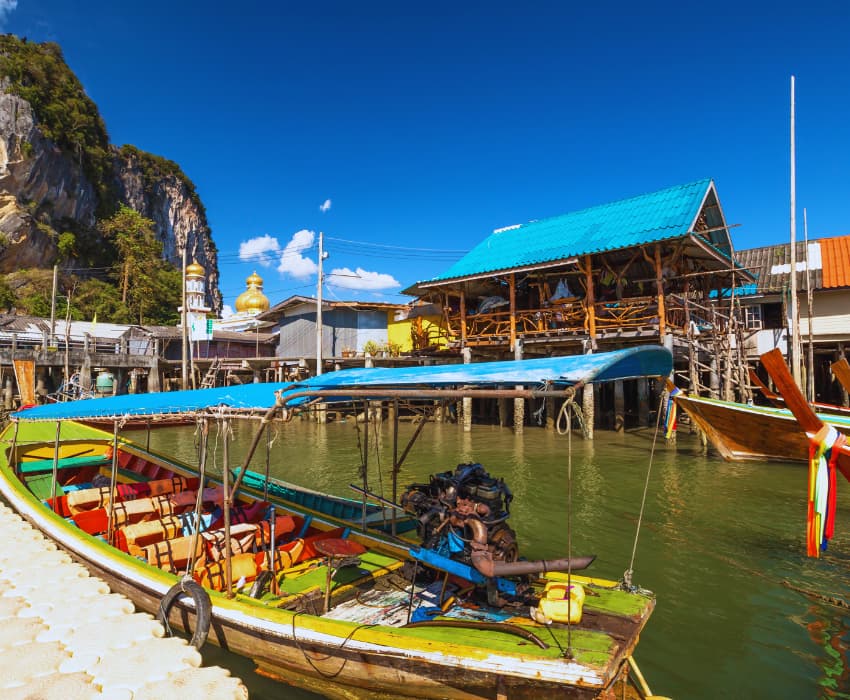
Getting to Koh Panyee
Koh Panyee is accessible primarily by boat, with convenient departure points from Phuket and Krabi. The journey to this unique floating village is part of the adventure, offering scenic views of Phang Nga Bay’s iconic limestone cliffs and emerald-green waters.
Boat tours from Phuket typically depart from Ao Po Grand Marina or other nearby piers. The ride to Koh Panyee takes about an hour and a half, depending on sea conditions. These tours often include multiple stops, allowing visitors to explore other attractions in the bay, such as James Bond Island and various hidden lagoons and caves.
From Krabi, boats depart from the main piers in Krabi Town. The trip to Koh Panyee takes slightly longer, usually around two hours. Like the Phuket tours, these excursions often include visits to additional sites in Phang Nga Bay, providing a comprehensive experience of the region’s natural beauty and cultural landmarks.
Tour Options
Several tour operators offer packages that include Koh Panyee as a key destination. These tours are designed to explore Phang Nga Bay thoroughly and typically feature a mix of cultural and natural attractions.
Popular tours often combine a visit to Koh Panyee with stops at James Bond Island, known for its appearance in the James Bond film “The Man with the Golden Gun.” These tours usually offer opportunities for kayaking through sea caves, swimming in hidden lagoons, and exploring other nearby islands. The comprehensive nature of these tours makes them a favourite among tourists seeking to maximise their experience in Phang Nga Bay.
Private boat tours are available for those looking for a more intimate experience. These customised tours offer greater flexibility, allowing visitors to spend more time at Koh Panyee and other preferred locations. Private tours can be tailored to specific interests, such as photography, bird watching, or in-depth cultural exploration, providing a personalised and enriching experience.
Among the best tour experiences are those that include knowledgeable guides who can provide detailed information about the area’s history, culture, and ecology. Guides familiar with the local community can enhance the visit to Koh Panyee by facilitating meaningful interactions with the villagers and offering insights into their traditional way of life.
Conservation and Sustainability
Like many unique tourist destinations, Koh Panyee faces significant environmental challenges. The increased tourism has brought about waste management issues and pressures on the local ecosystem. Managing waste in a floating village is particularly challenging due to limited space and infrastructure. Additionally, the influx of tourists can disturb marine life and contribute to water pollution if not properly managed.
The community has had to balance the benefits of tourism with the need to protect their fragile environment. The traditional lifestyle, heavily dependent on fishing, also requires careful management to ensure that marine resources are not depleted.
Sustainable Tourism
Recognising the importance of preserving their environment, the residents of Koh Panyee, along with tour operators, have implemented various sustainable tourism practices. One of the primary efforts includes improving waste management systems. Initiatives have been introduced to educate locals and tourists about proper waste disposal and recycling. This includes placing more waste bins around the village and organising regular clean-up activities to keep the village and surrounding waters clean.
Tour operators play a crucial role in promoting sustainability. Many operators now provide eco-friendly tours emphasising low-impact activities, such as kayaking and guided walks, over disruptive options. They also ensure that all waste generated during tours is collected and disposed of properly. Additionally, operators educate tourists on how to interact responsibly with the environment and local community, reinforcing the importance of conservation.
Minimise your Footprint
Tourists visiting Koh Panyee can contribute to sustainability by following simple guidelines. Firstly, minimising plastic use is crucial. Visitors should bring reusable water bottles, bags, and containers to reduce plastic waste. Participating in local recycling programs and disposing of waste responsibly can significantly impact the environment.
Respecting local wildlife and natural habitats is another important aspect. Tourists should avoid touching or disturbing marine life and collecting shells or other natural items. When snorkelling or diving, it is essential to avoid stepping on coral reefs or stirring up sediment, as these actions can damage delicate ecosystems.
Supporting local businesses that prioritise sustainability can also make a difference. Choosing eco-friendly tour operators and accommodations helps promote and sustain environmentally responsible practices. Additionally, tourists can engage with and learn from the local community about their conservation efforts, fostering a deeper understanding and appreciation of the challenges faced by Koh Panyee.
Accommodation and Travel Tips
Choosing the accommodation to match your experience when visiting Phang Nga Bay and Koh Panyee, like a luxury Phang Nga beach resort like Aleenta, offers comfort, convenience, and access to the region’s attractions. Aleenta provides various amenities and services to ensure a relaxing and memorable stay. Guests can enjoy spacious villas with private pools, fine dining at on-site restaurants, and rejuvenating treatments at the Ayurah Spa & Wellness Centre.
The resort’s prime location on the pristine Natai Beach means you are just a short distance from Phang Nga Bay. This proximity allows for easy day trips to Koh Panyee and other notable sites in the bay. The resort can arrange various excursions and activities, including boat tours, kayaking adventures, and cultural experiences, ensuring you make the most of your visit.
Tips for Visitors
When planning a day trip to Koh Panyee, packing appropriately can make your experience more enjoyable. Essentials include lightweight, breathable clothing, a hat, and sunglasses to protect against the sun. Don’t forget to bring high SPF sunscreen to prevent sunburn. Comfortable walking shoes or sandals with good grip are advisable, as you’ll navigate the village’s wooden walkways.
A reusable water bottle is crucial for staying hydrated throughout the day. Consider bringing a small backpack to carry your belongings and a waterproof bag to protect valuables, especially if you plan to participate in water-based activities like kayaking. A camera or smartphone with a good camera will help you capture the stunning scenery and unique architecture of Koh Panyee.
The best times to visit Koh Panyee are during the dry season, from November to April. This period offers the most pleasant weather, with sunny days and minimal rainfall, making it ideal for outdoor activities and boat tours. From May to October, the wet season brings higher humidity and frequent rain showers, limiting your exploration and activities.
Related Articles
- Exploring Phang Nga Bay
- Islands in Phang Nga Bay
- Similan Islands in Phang Nga
- Visiting Phang Nga Town
- Mangrove Ecosystem of Phang Nga Bay
Aleenta Phuket
Phang Nga Resort & Spa
Phang Nga Resort & Spa
33 Moo 5, Khok Kloi,
Takua Thung, Phang Nga
82140 Thailand
T: +66 (0) 76 580 333

